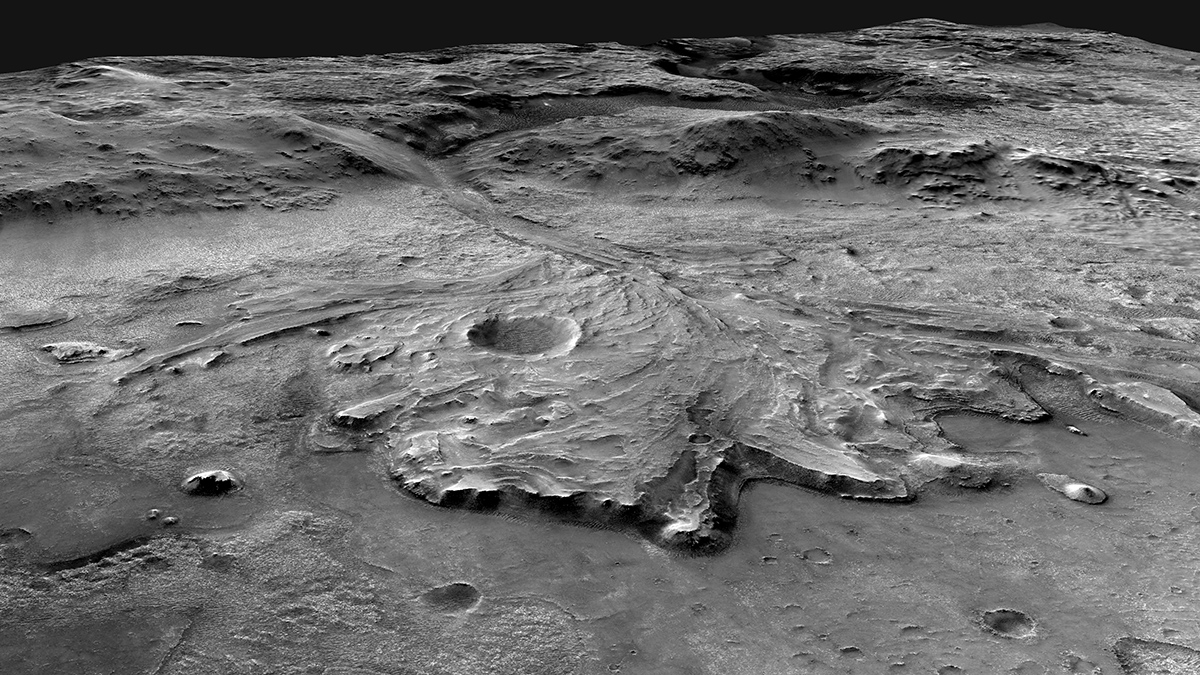Source: Earth and Space Science
The Perseverance rover, successfully deployed to Jezero crater on Mars in 2021, has many jobs as it bumps along the planet’s surface. These jobs include sampling organic compounds in rock and sediment to look for the building blocks of life.
During its first year and a half of operation, Perseverance performed spectroscopic investigations using several onboard sensors and detected magnesium- and iron-rich carbonates at multiple places on the crater’s floor. These carbonates will help scientists better understand the potential past habitability of Jezero crater, and they could preserve biomarkers of ancient life.
Perseverance’s SuperCam instrument combines various techniques to analyze minerals, including laser-induced breakdown spectroscopy (LIBS), time-resolved Raman and luminescence (TRR/L) spectroscopy, and visible-infrared spectroscopy (VISIR). In new research, Veneranda et al. experimented with the techniques here on Earth to optimize SuperCam’s ability to classify carbonates within the crater. They studied a collection of mineral samples of different phases within the calcium-magnesium-iron carbonate system and with known chemical compositions using a set of laboratory instruments.
The team classified the samples using data from single spectroscopic methods and by combining data from multiple methods in different ways and then compared the results. They found that combining data from Raman, VISIR, and LIBS sensors—focusing on specific spectral indicators (e.g., detection intensities at certain wavelengths)—outperformed classifications performed using single-sensor analyses.
The team plans to continue testing and validating its approach using additional terrestrial analogue samples of Mars geological targets. The goal is to provide an improved carbonate classification approach that will help in the selection of target sites on Mars to be sampled and cached for a future sample return mission. The work may also help in the planning of mineralogical studies during future planetary missions, according to the researchers. (Earth and Space Science, https://doi.org/10.1029/2023EA002829, 2023)
—Sarah Derouin (@Sarah_Derouin), Science Writer

